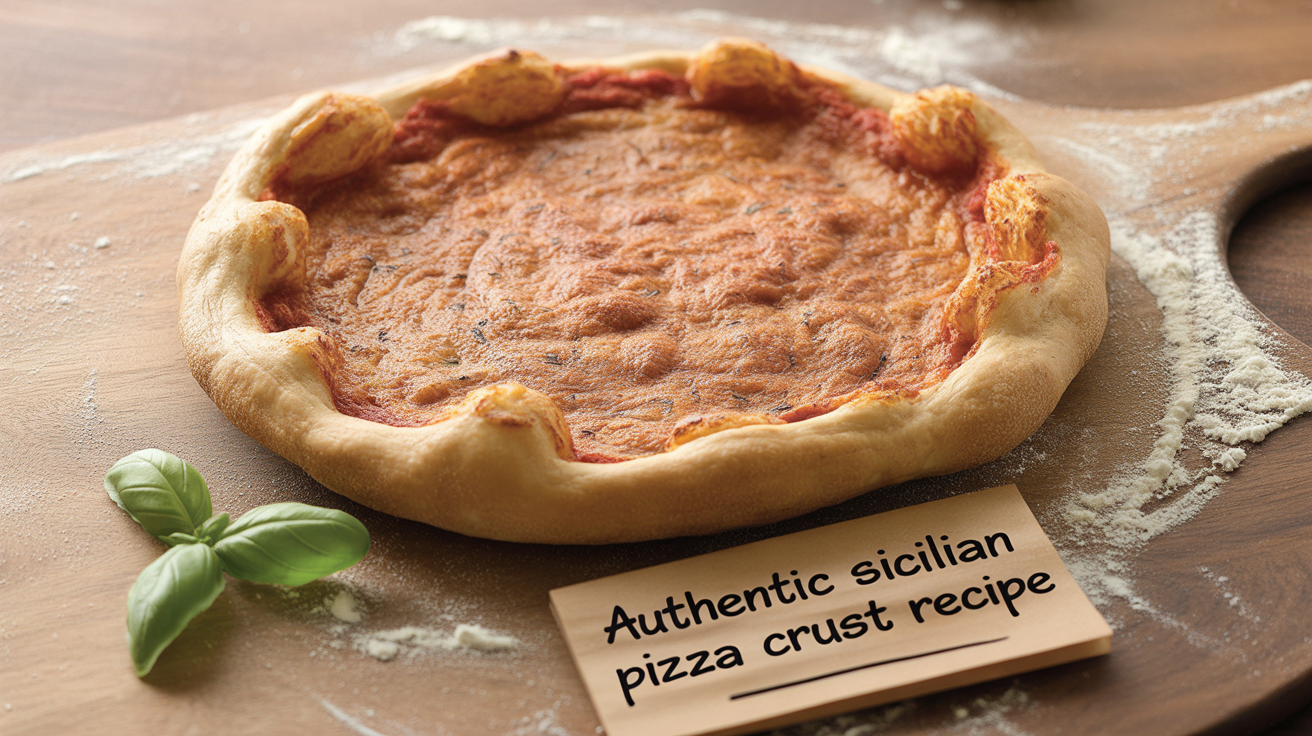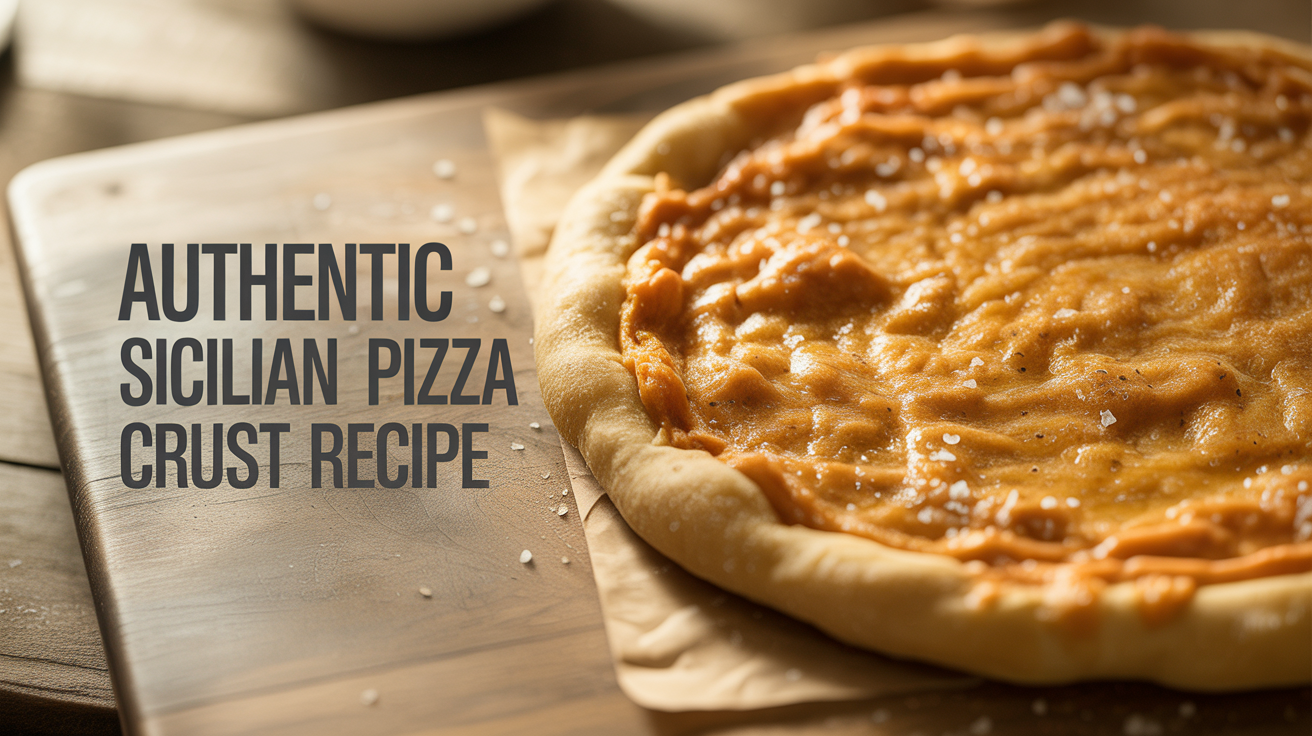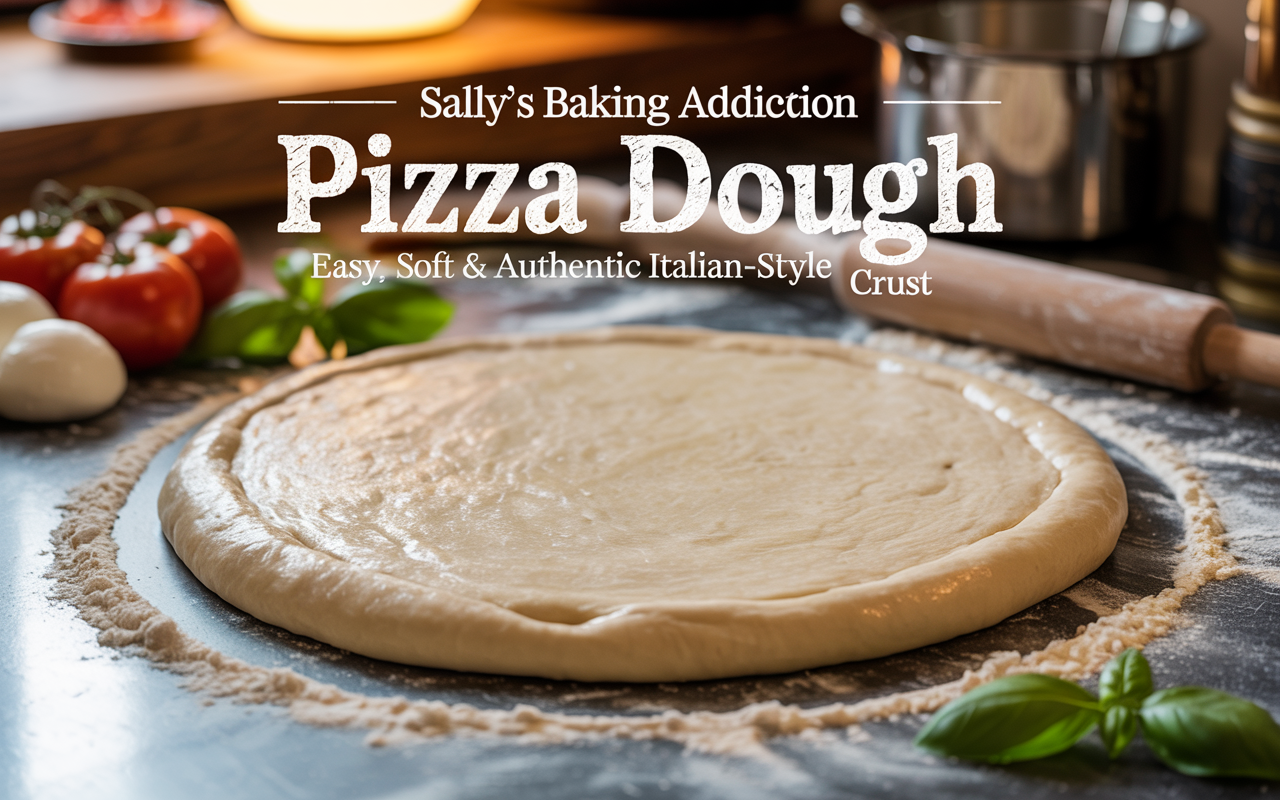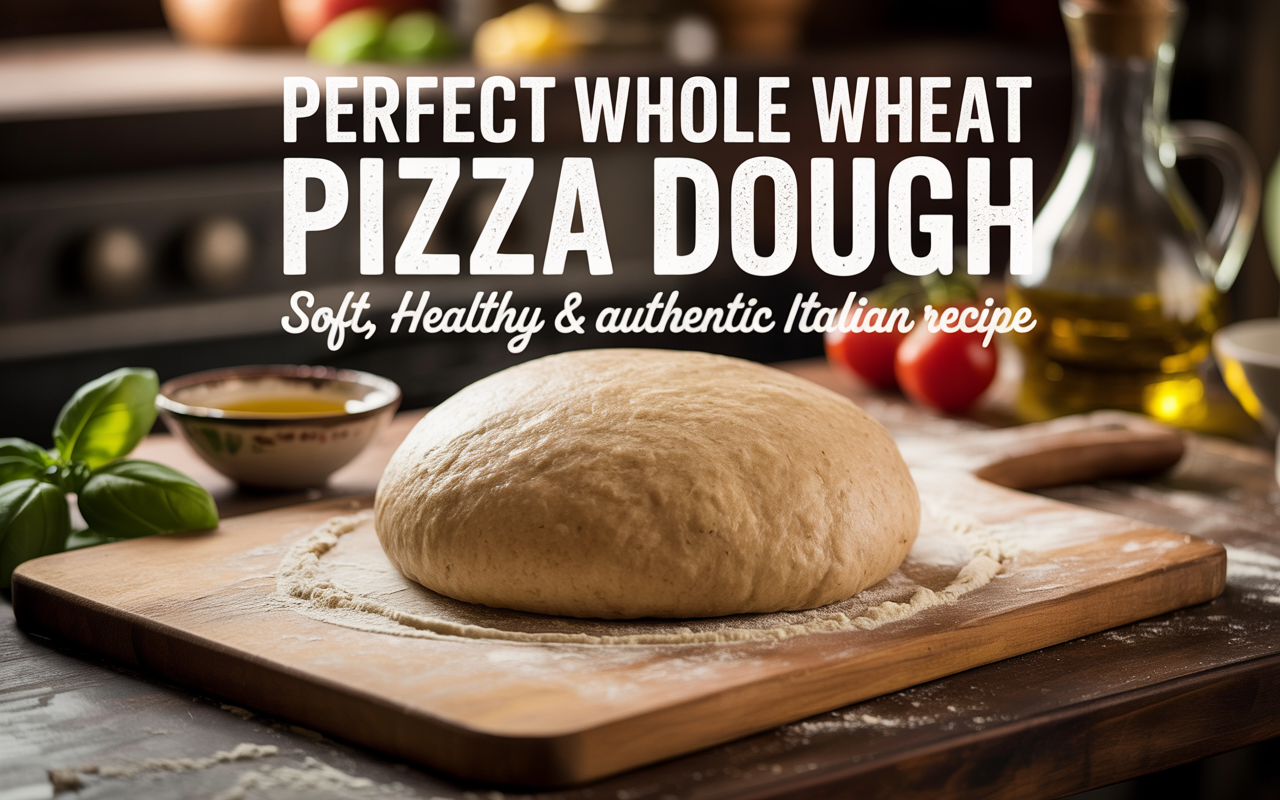Sicilian Pizza Crust Recipe – Thick, Airy, and Crispy-Edged Perfection
Pizza comes in many shapes and sizes, but if you’ve ever sunk your teeth into a true Sicilian pizza, you know it’s in a league of its own. We’re not talking about thin, floppy slices here. No, this is about golden, pillow-soft dough that’s thick but never heavy, airy yet sturdy, with a bottom crust so crisp it crackles when you bite.
The magic of Sicilian pizza lies in its crust. That’s why today I’m sharing my tried-and-true Sicilian pizza crust recipe—a dough I’ve perfected over the years, after testing countless flours, rise times, and baking methods. If you love deep-dish style but crave authentic Italian character, this recipe is going to change your pizza game.
This isn’t your typical quick dough. Sicilian crust is all about patience—letting the yeast work slowly, giving you deep flavor, a beautiful rise, and that dreamy light texture. Don’t worry, though: the steps are simple, and the results are absolutely worth it.
Let’s dive right into making the kind of Sicilian pizza you’d proudly serve straight from the pan, cut into thick squares, with cheese stretching and olive oil glistening under the light.

Ingredients for Sicilian Pizza Crust
Here’s everything you’ll need to make this hearty, bakery-style pizza crust.
| Ingredient | Measurement | Notes |
|---|---|---|
| Bread flour | 4 ½ cups (540 g) | High-protein for chew and structure |
| Warm water (95°F / 35°C) | 1 ¾ cups (415 ml) | Just warm, not hot |
| Active dry yeast | 2 ¼ tsp (1 packet / 7 g) | Instant yeast works too |
| Olive oil | ¼ cup (60 ml) | Plus more for greasing pan |
| Honey or sugar | 1 tbsp | Feeds the yeast |
| Salt | 2 tsp | Balances flavor |
| Semolina (optional) | 2 tbsp | For extra crunch in the bottom crust |

Step-by-Step Instructions
Step 1 – Activate the yeast
In a small bowl, combine warm water, yeast, and honey. Stir and let it sit 5–10 minutes until foamy. If nothing happens, your yeast may be dead—start over with fresh yeast.
Step 2 – Mix the dough
In a large mixing bowl, whisk together flour and salt. Pour in the yeast mixture and olive oil. Mix with a wooden spoon or stand mixer until it forms a shaggy dough.
Step 3 – Knead
Knead the dough for 8–10 minutes by hand (or 5 minutes in a mixer with a dough hook). It should feel smooth, elastic, and slightly tacky.
Step 4 – First rise
Transfer dough to a lightly oiled bowl. Cover with plastic wrap or a towel and let rise at room temperature for 2–3 hours, or until doubled in size.
Step 5 – Oil the pan generously
This is key. Sicilian pizza bakes in a rectangular or square pan. Pour 3–4 tablespoons of olive oil into your pan and spread evenly. This oil fries the bottom crust into golden perfection.
Step 6 – Shape the dough
Gently press the dough into the pan, stretching it to the edges. If it springs back, let it rest 10 minutes and try again. Don’t force it; patience makes better texture.
Step 7 – Second rise
Cover the pan and let the dough rise again for 45–60 minutes. This creates that airy interior Sicilian pizza is known for.
Step 8 – Preheat your oven
Crank your oven to 475°F (245°C). A hot oven is crucial for getting the right rise and crispness.
Step 9 – Top your pizza
Spread sauce edge-to-edge, sprinkle cheese generously, and add toppings. Traditionally, Sicilian pizzas are heavy on mozzarella, with tomato sauce and sometimes anchovies or herbs—but feel free to get creative.
Step 10 – Bake
Bake for 20–25 minutes until the cheese is bubbling, edges are golden, and the crust is crisp.
Step 11 – Rest, slice, and serve
Let it cool for 5 minutes before cutting into thick, square slices. Serve straight from the pan—it’s rustic, authentic, and perfect for sharing.

Why This Sicilian Pizza Crust Works
- High hydration: The dough uses more water than standard pizza dough, which creates an airy, light crumb.
- Olive oil magic: The generous oil in the pan gives you that signature fried-crisp bottom crust.
- Two rises: The second rise in the pan is what gives Sicilian pizza its pillowy texture.
- Thick but not heavy: Perfect balance of chew, crunch, and softness.
Tips & Tricks for Perfect Sicilian Pizza Crust
- Use bread flour. The high protein makes all the difference for structure and chew.
- Don’t rush the rise. If you have time, let the dough rise overnight in the fridge—it deepens the flavor beautifully.
- Oil = flavor. Be generous. Sicilian pizza should almost fry in the pan.
- Square slices, always. Tradition calls for cutting Sicilian pizza into thick, square portions.
- Try semolina flour. Dusting the bottom of the pan with semolina gives extra crunch.
- Edge-to-edge cheese. Don’t stop short—let the cheese run right to the pan edges for crispy, caramelized bites.
- Keep toppings balanced. Sicilian crust can handle heavy toppings, but don’t drown it—you want airy dough, not soggy bread.
FAQ Section
Q: What’s the difference between Sicilian pizza and Detroit-style pizza?
Great question! Sicilian pizza originated in Italy with a focaccia-like crust, usually baked with olive oil and simple toppings. Detroit-style is inspired by Sicilian but baked in blue steel pans, with cheese pushed to the edges and sauce on top.
Q: Can I make Sicilian dough ahead of time?
Yes. After the first rise, refrigerate overnight for better flavor. Let it warm up before stretching into the pan.
Q: Do I need a special pan?
Not at all. A standard 13×9 baking pan works fine. For authenticity, a dark, heavy steel pan gives the best crispiness.
Q: Can I use all-purpose flour instead of bread flour?
You can, but bread flour really makes the crust chewier and more authentic.
Q: How thick should Sicilian pizza crust be?
Typically ¾ to 1 inch thick—hearty but not overwhelming.
Final Thoughts
There’s something deeply satisfying about pulling a golden, bubbling Sicilian pizza out of the oven. The aroma of olive oil, toasted dough, and melted cheese fills the kitchen. You cut into it and hear the crisp edge give way to a tender, airy crumb. One bite and you know—you’ve nailed it.
This Sicilian pizza crust recipe is more than just dough. It’s tradition. It’s comfort. It’s a celebration of simple ingredients transformed by patience and love. Whether you top it with classic tomato and mozzarella, or get bold with pepperoni, olives, or even anchovies, the foundation—the crust—will always shine.
So the next time you’re craving pizza night, skip the delivery. Grab your sheet pan, oil it generously, and bake this beauty. Slice it into thick squares, pour yourself a glass of red wine, and enjoy a little taste of Sicily at home.
Buon appetito! 🍕
See Also: Sheet Pan Pizza Dough Recipe – Easy, Crispy & Perfect for Family Dinners







